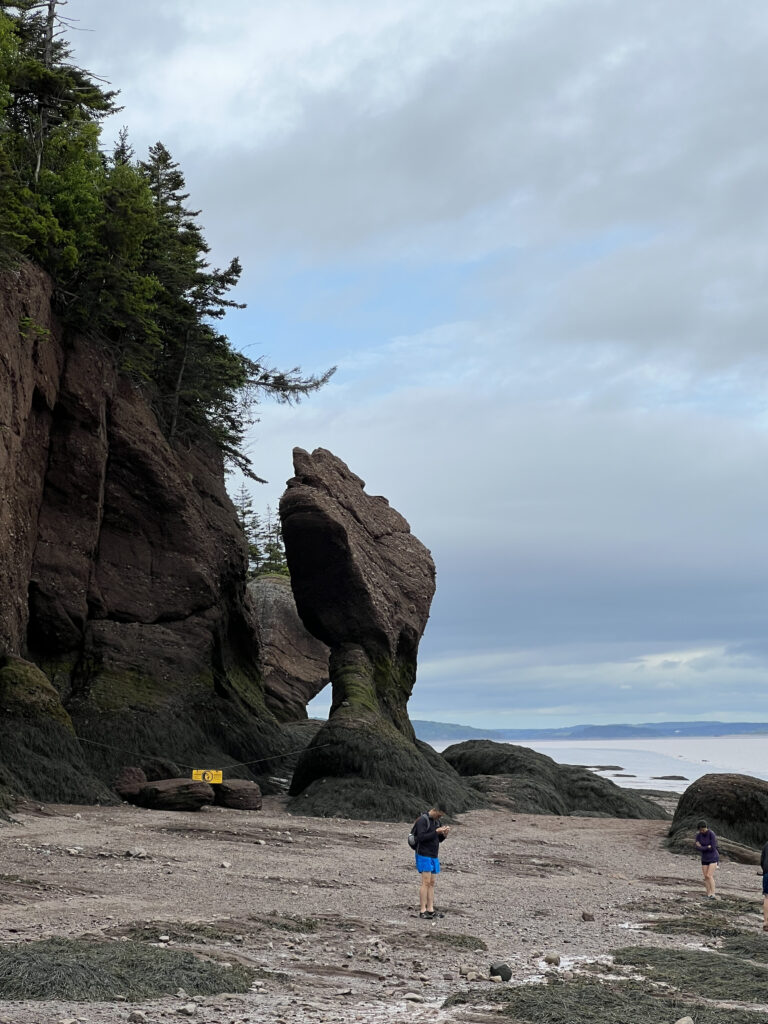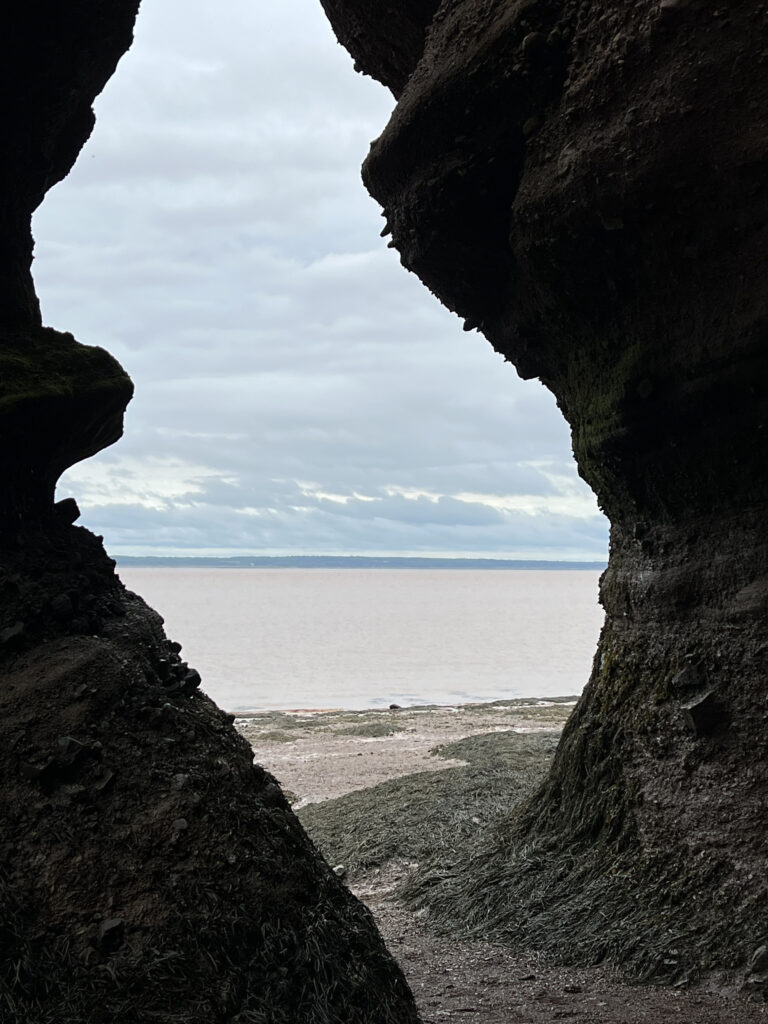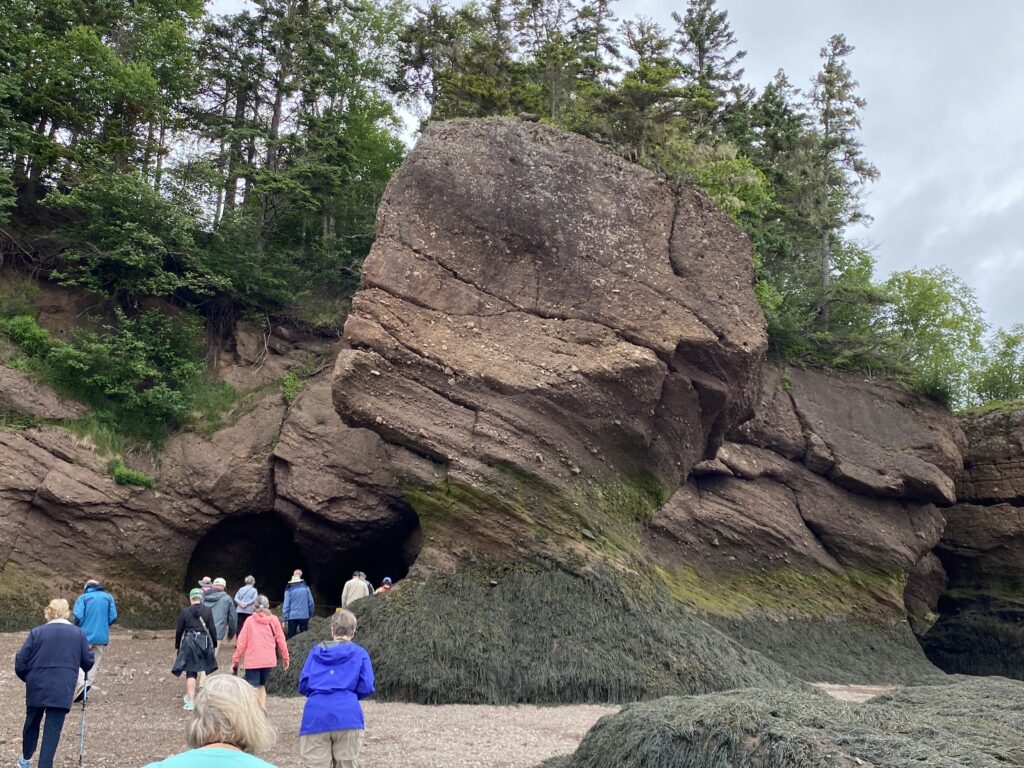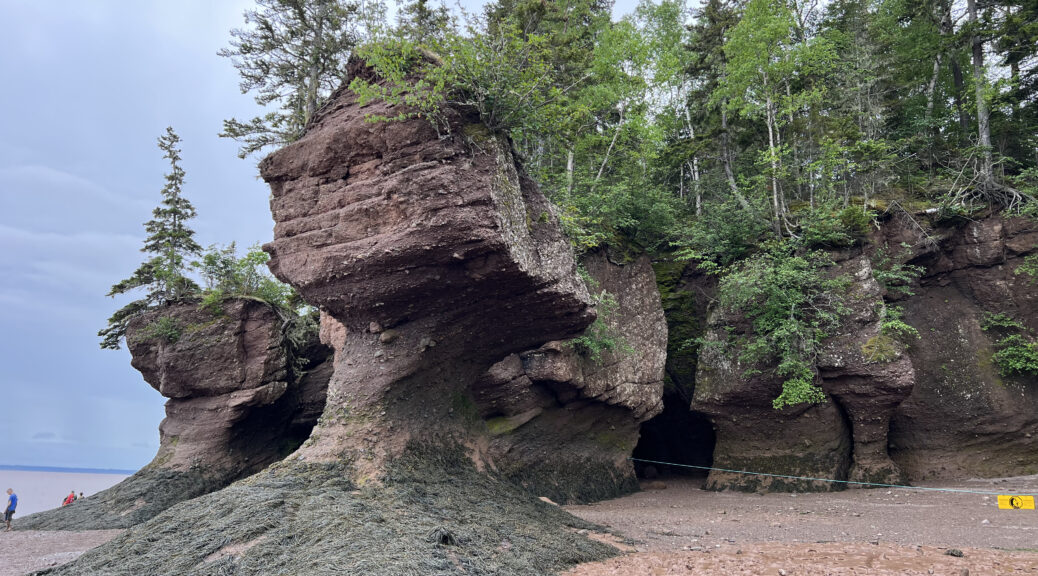
The Bay of Fundy
A highlight of our Maritimes trip was visiting the Bay of Fundy where we could walk on the ocean floor at low tide.
Tides are caused by gravitational forces exerted on the earth by the moon and to a lesser extent, the sun. Fundy’s tides are the highest in the world in part because of the funnel-shape of the bay which forces the water into a smaller space. At its fastest, the water level rises 13 feet in an hour. There are actually ladders for emergency use in some locations in case tourists are caught off guard by the quickly rising water.
The pictures below are “pictures of pictures.” The first one is a comparative picture showing the ocean at high tide where boats are operating on the water and at low tide where people can actually walk on the ocean floor. The next three pictures (also pictures of pictures) show this area at low tide, medium tide and high tide. These pictures were all on display at the Visitors’ Center.
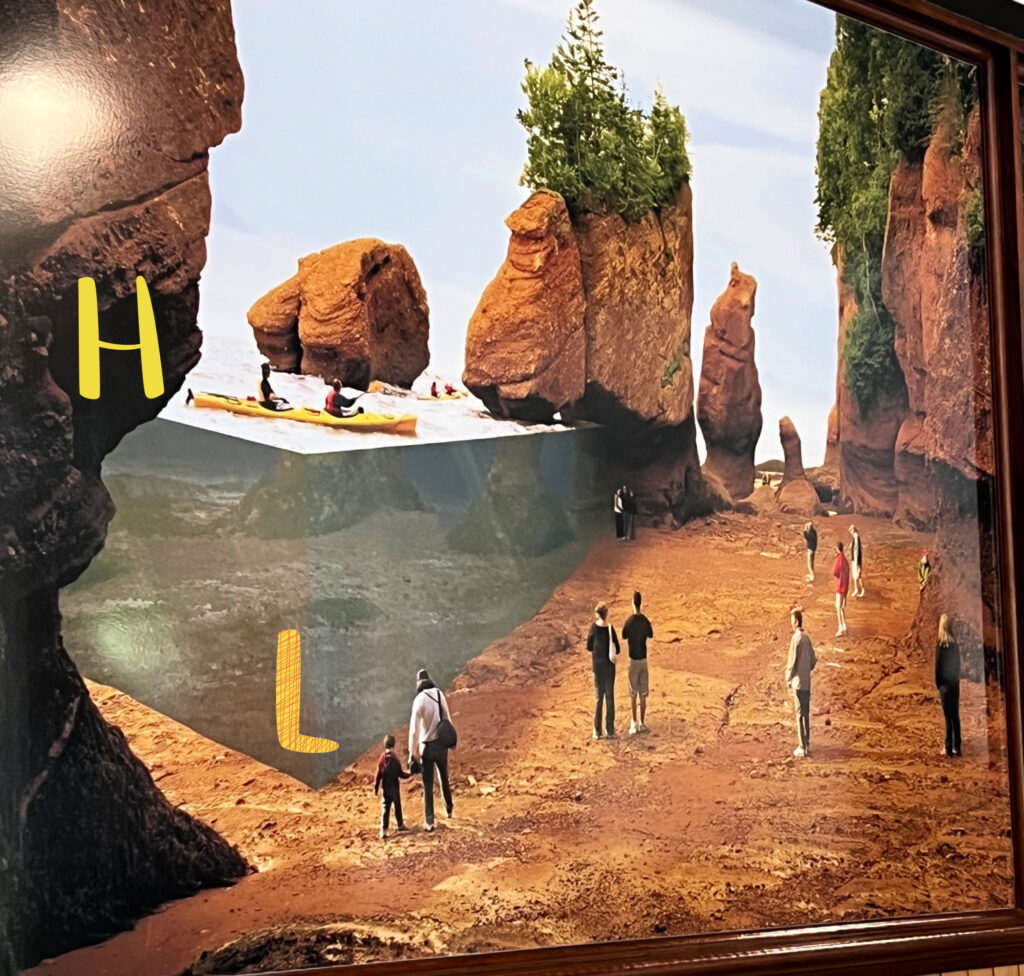
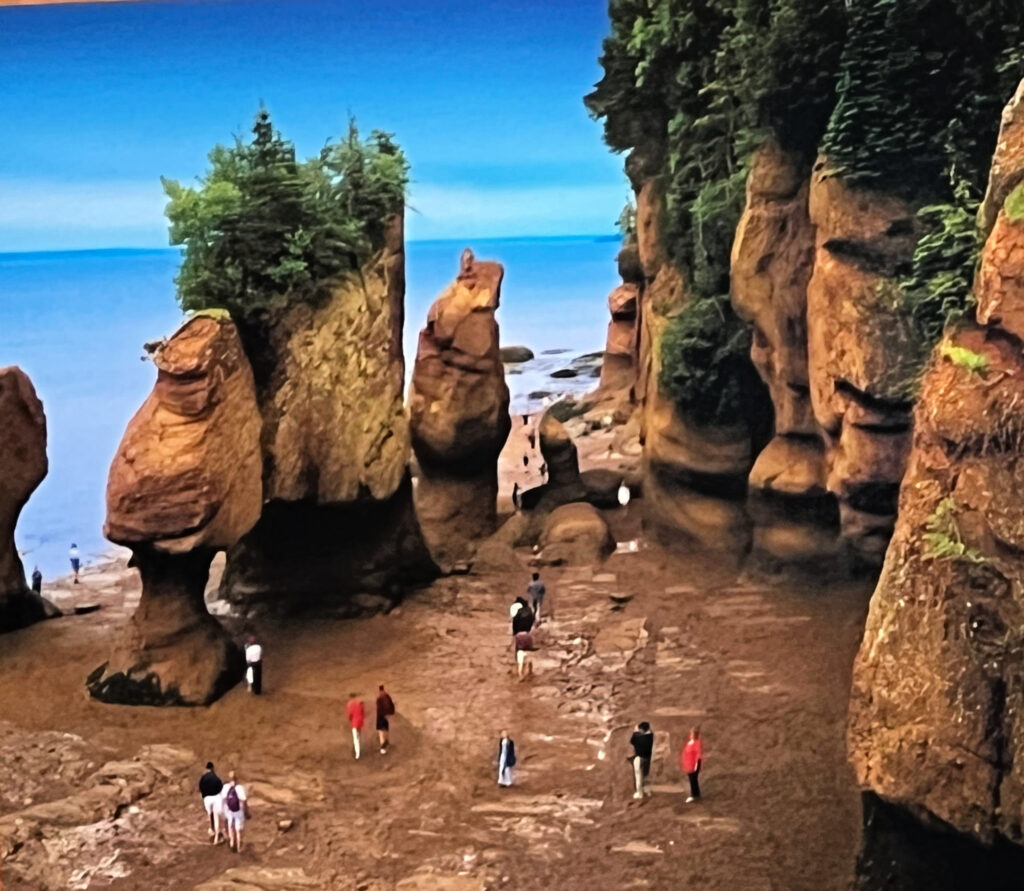
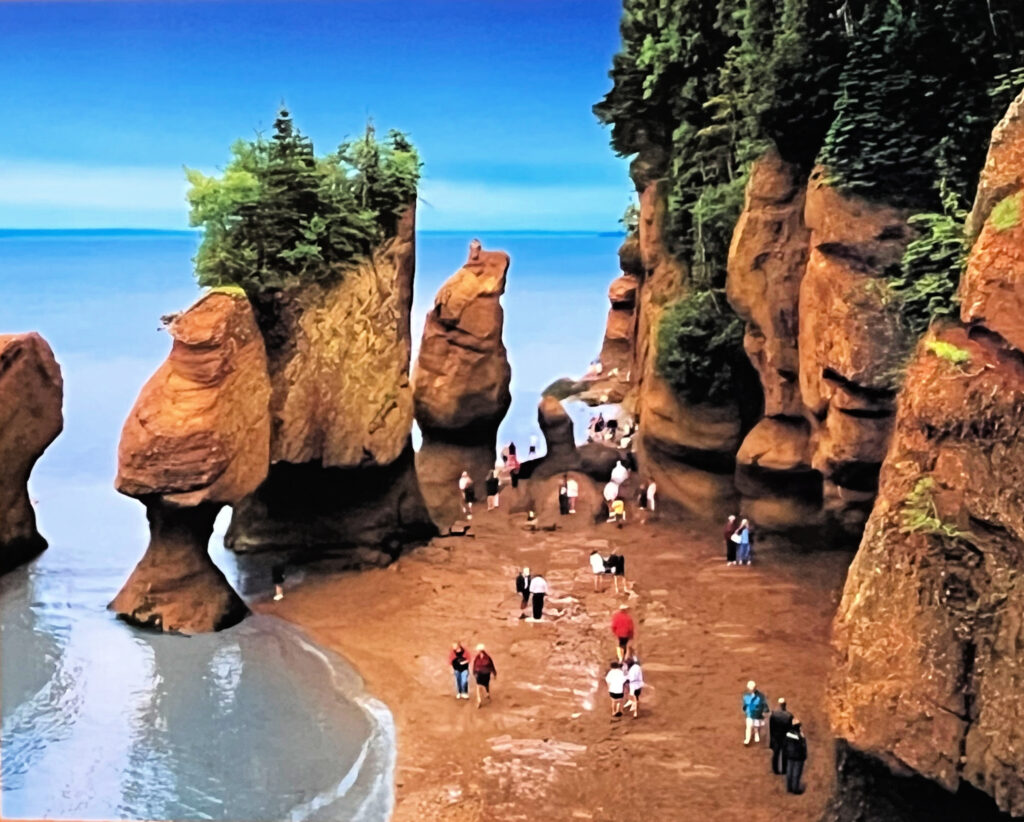
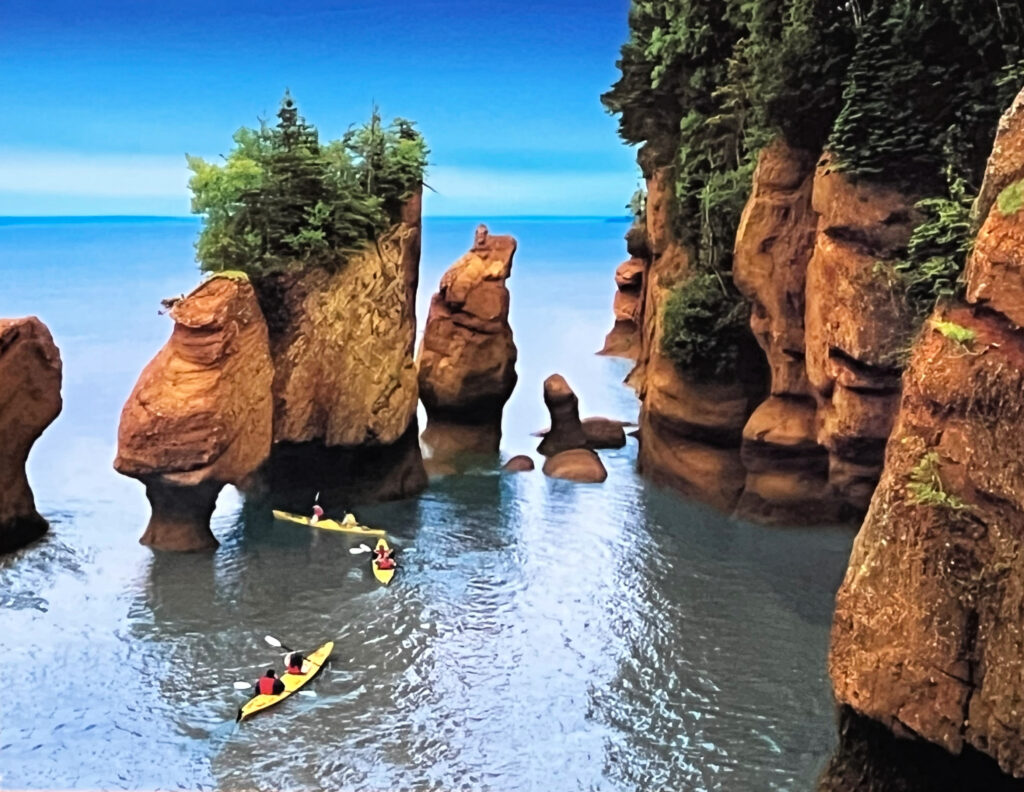
We took these next pictures from a viewing area above the ocean floor.
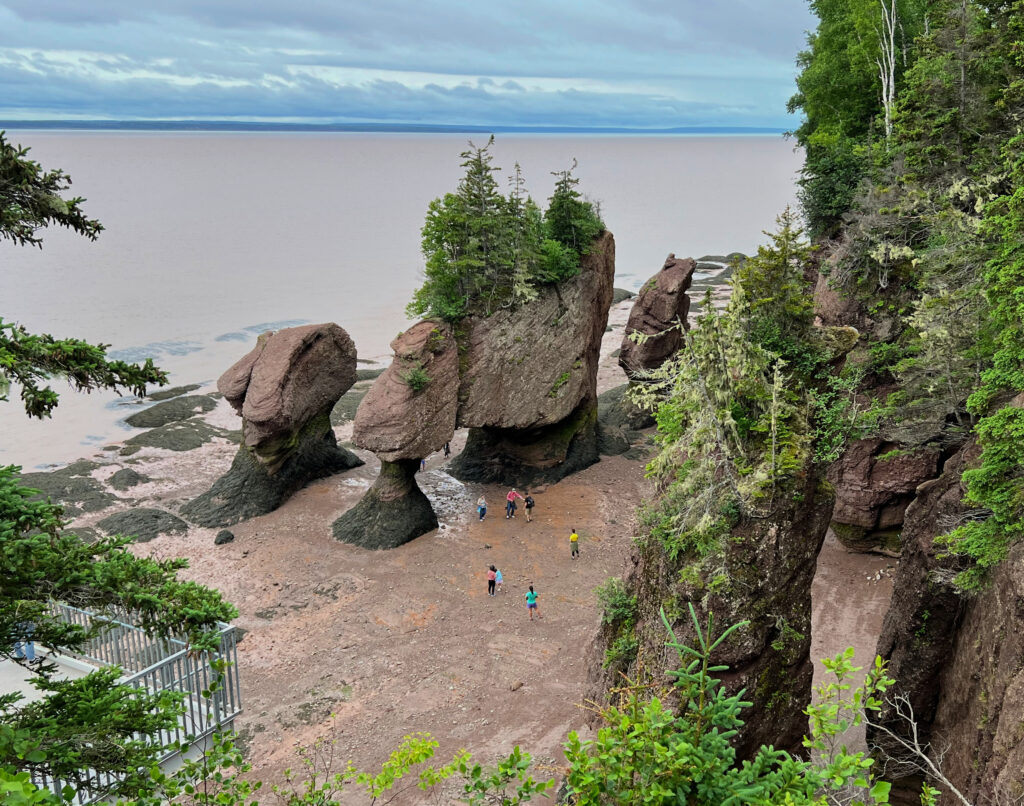
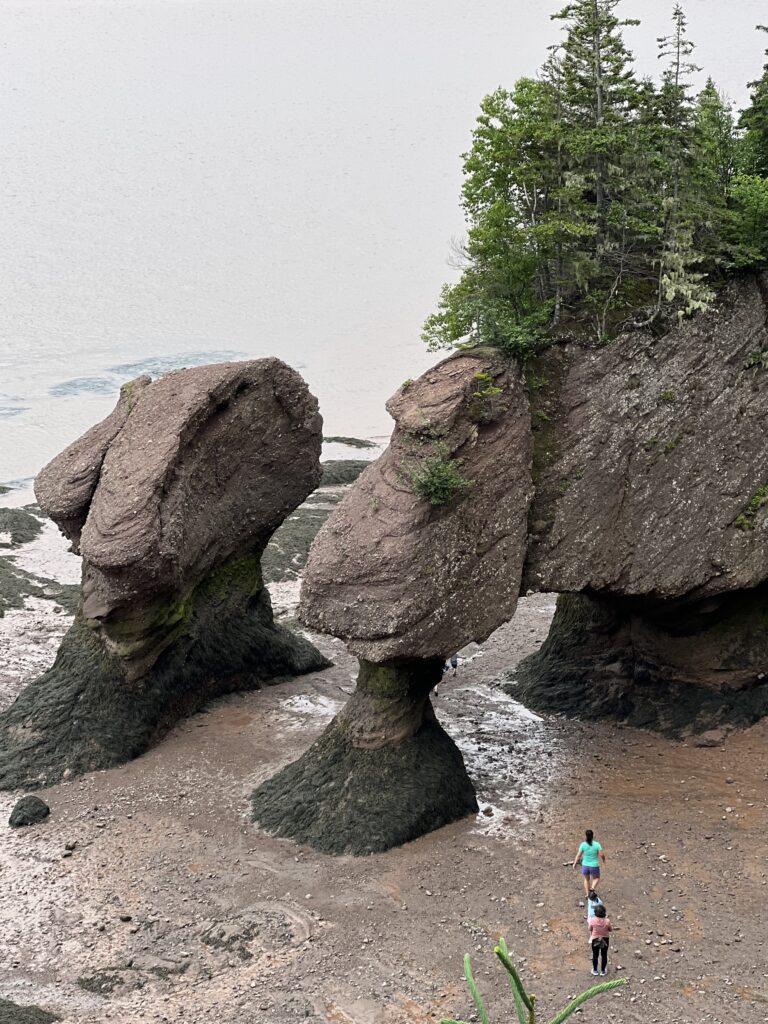

This is one of the iconic views of the Bay of Fundy that I took while we walked on the ocean floor – certainly a unique experience. We walked under the sea stacks and then walked along the shore. The geology, plant life and beauty were amazing.
The Bay of Fundy has been recognized as a UNESCO Global Geopark, a designation that recognizes sites and landscapes of international geological significance. Fossils of early dinosaurs and vertebrates were contributing factors to the UNESCO designation. The indigenous people of the region, the Mi’kmaq, have lived in the area for thousands of years, making it one of the earliest known sites of human habitation in northeastern North America.
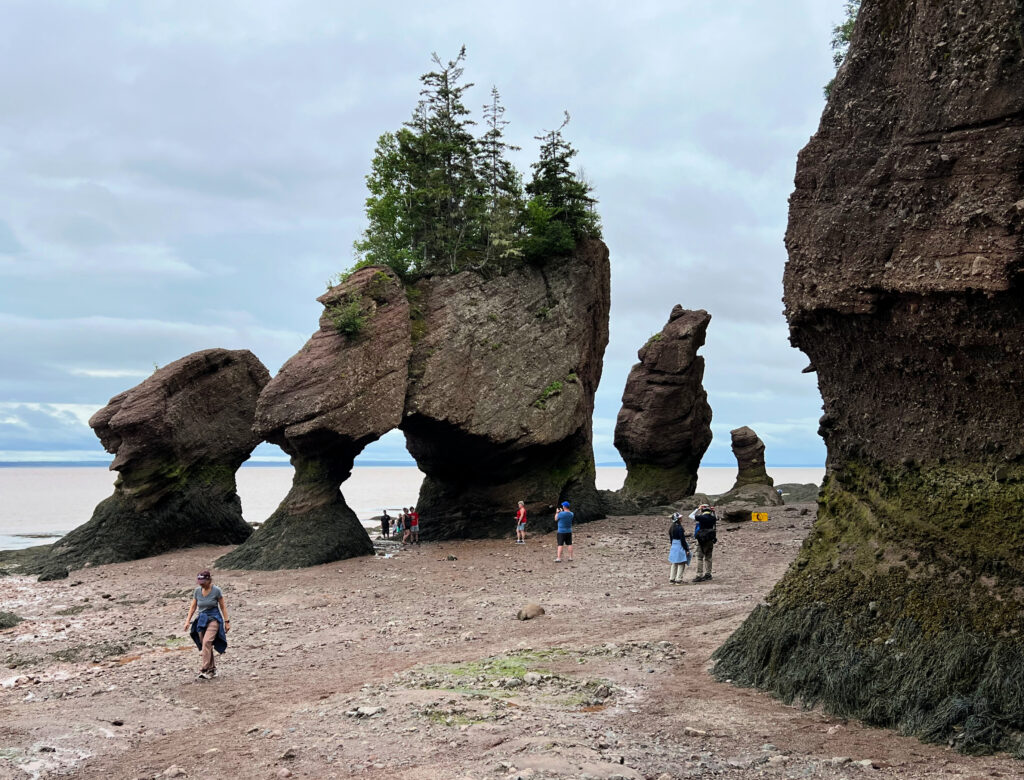
We walked around the ocean floor with a guide. The first picture below depicts some of the seaweed that clings to the rocks. The next picture is bladder whack. It contains a gelatin-like substance that has several purposes including medicinal use.

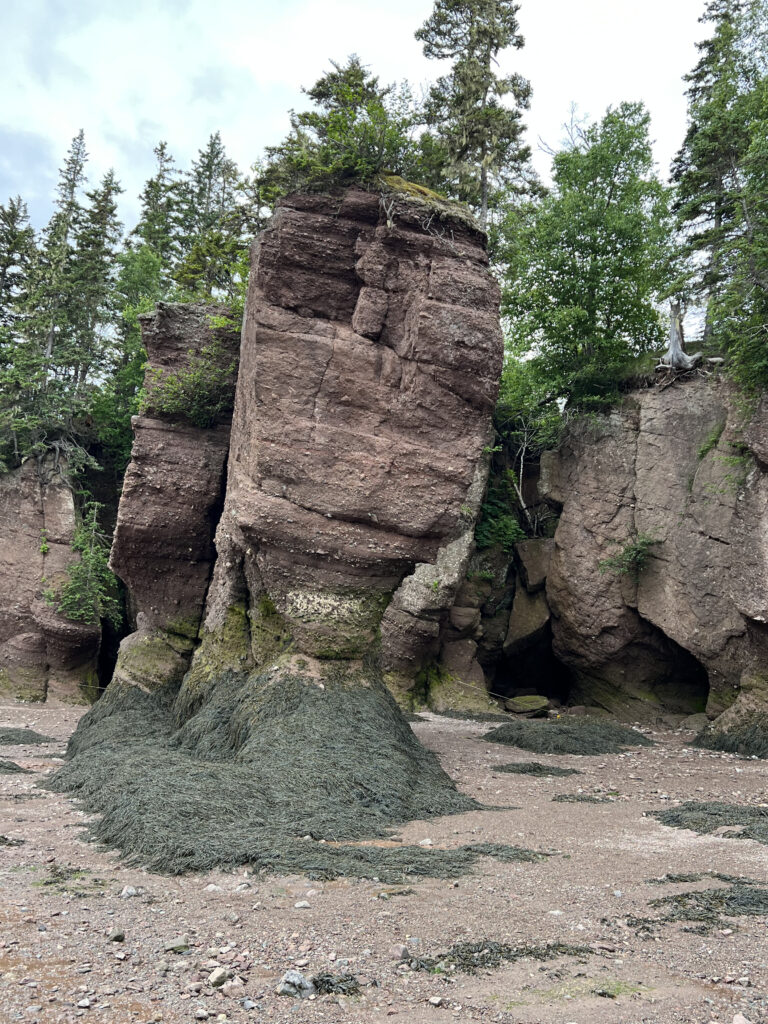
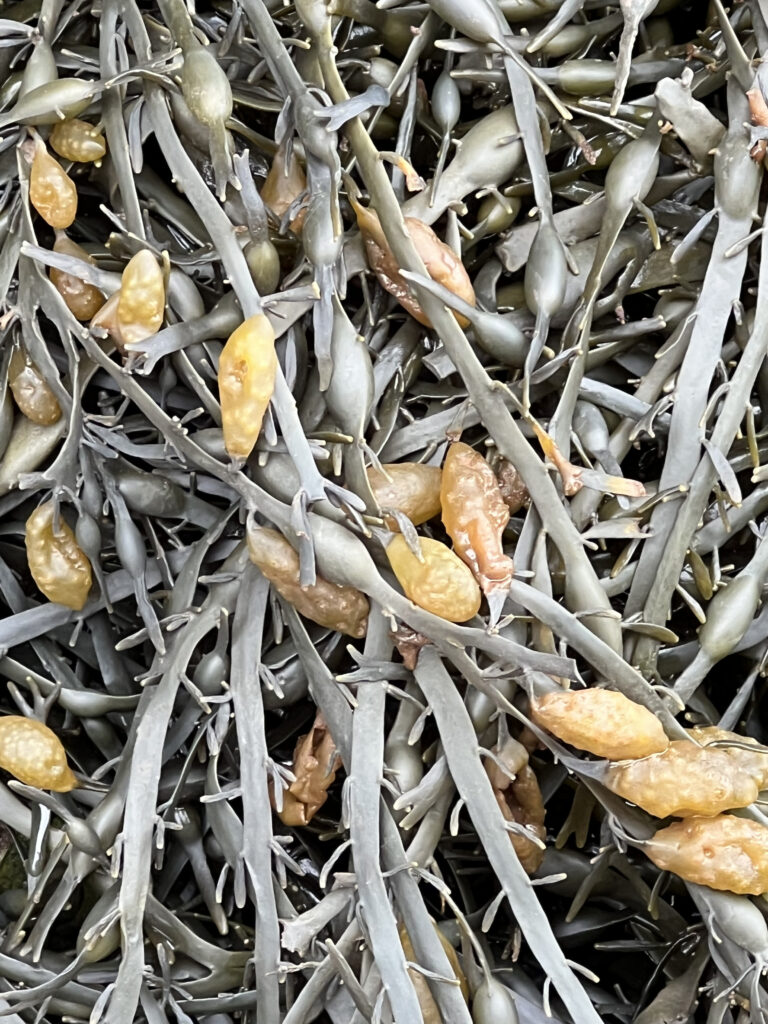
Below are some of the sea stacks with trees growing atop them. You can easily see why some are called flowerpots. Also note the shape of the sea stacks due to tidal erosion.
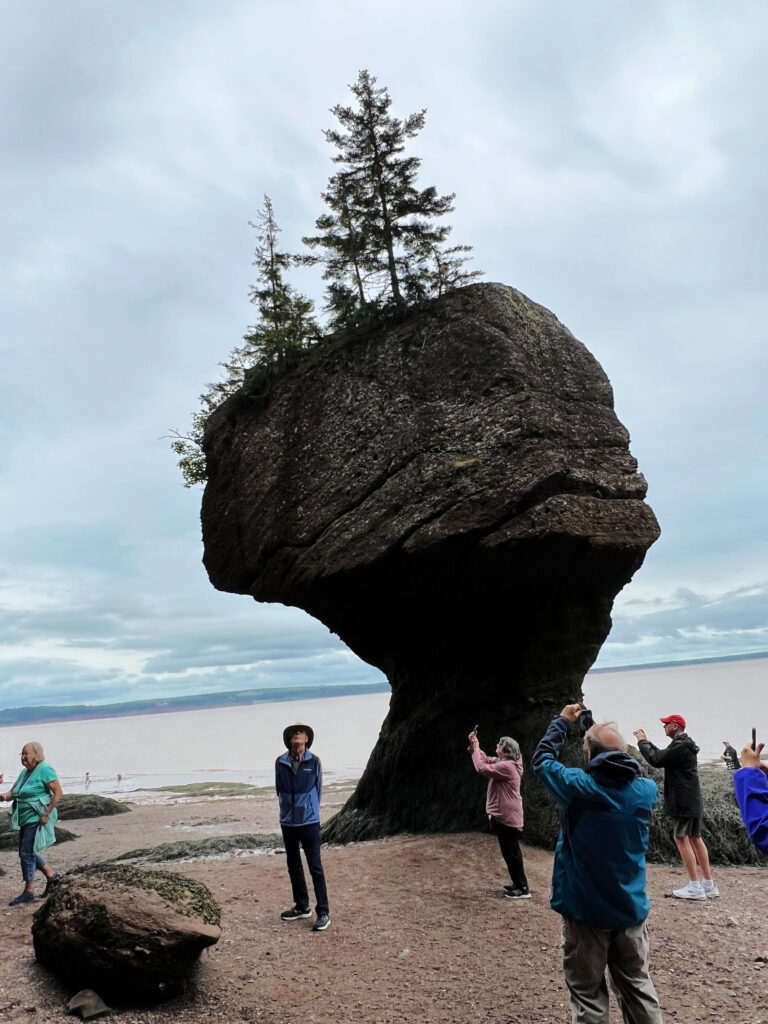
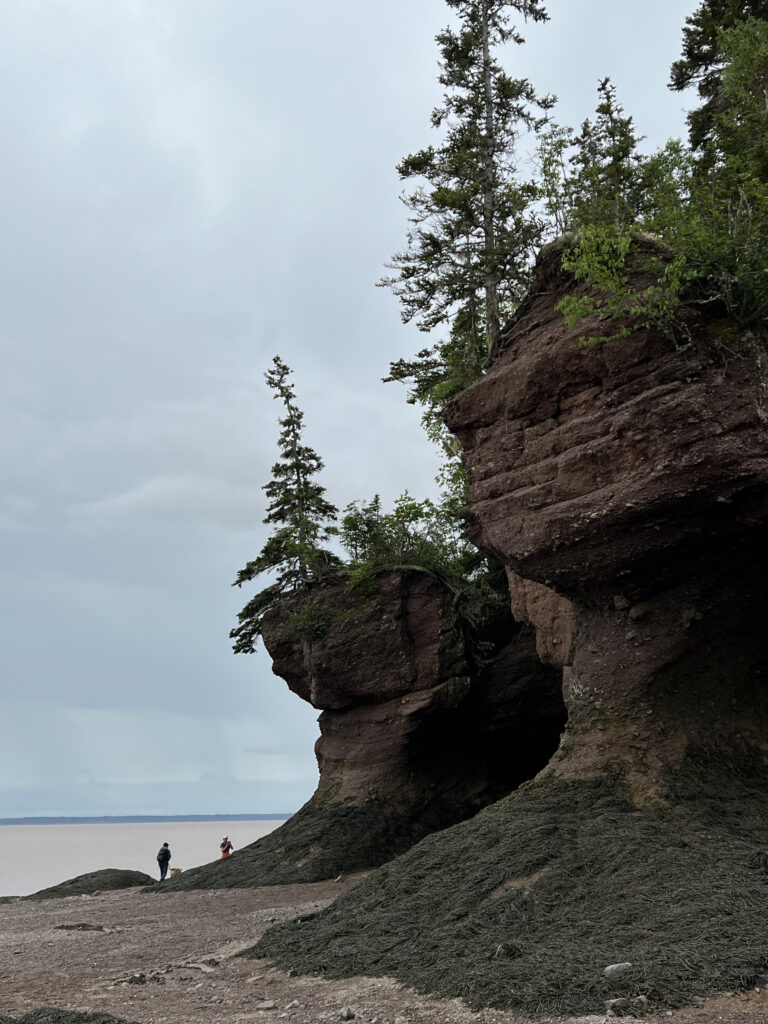
Here are just a few more pictures from our time at the Bay of Fundy.
